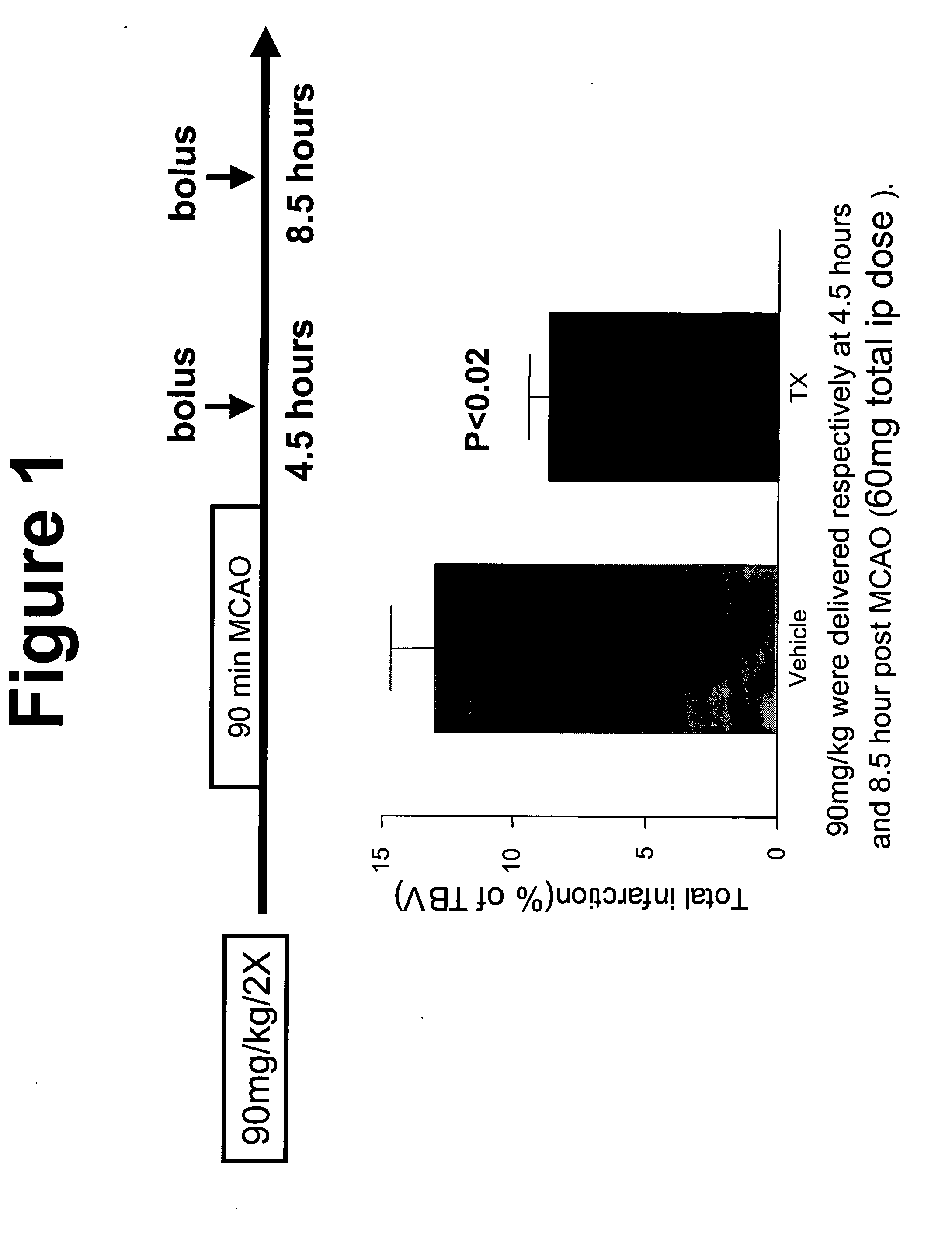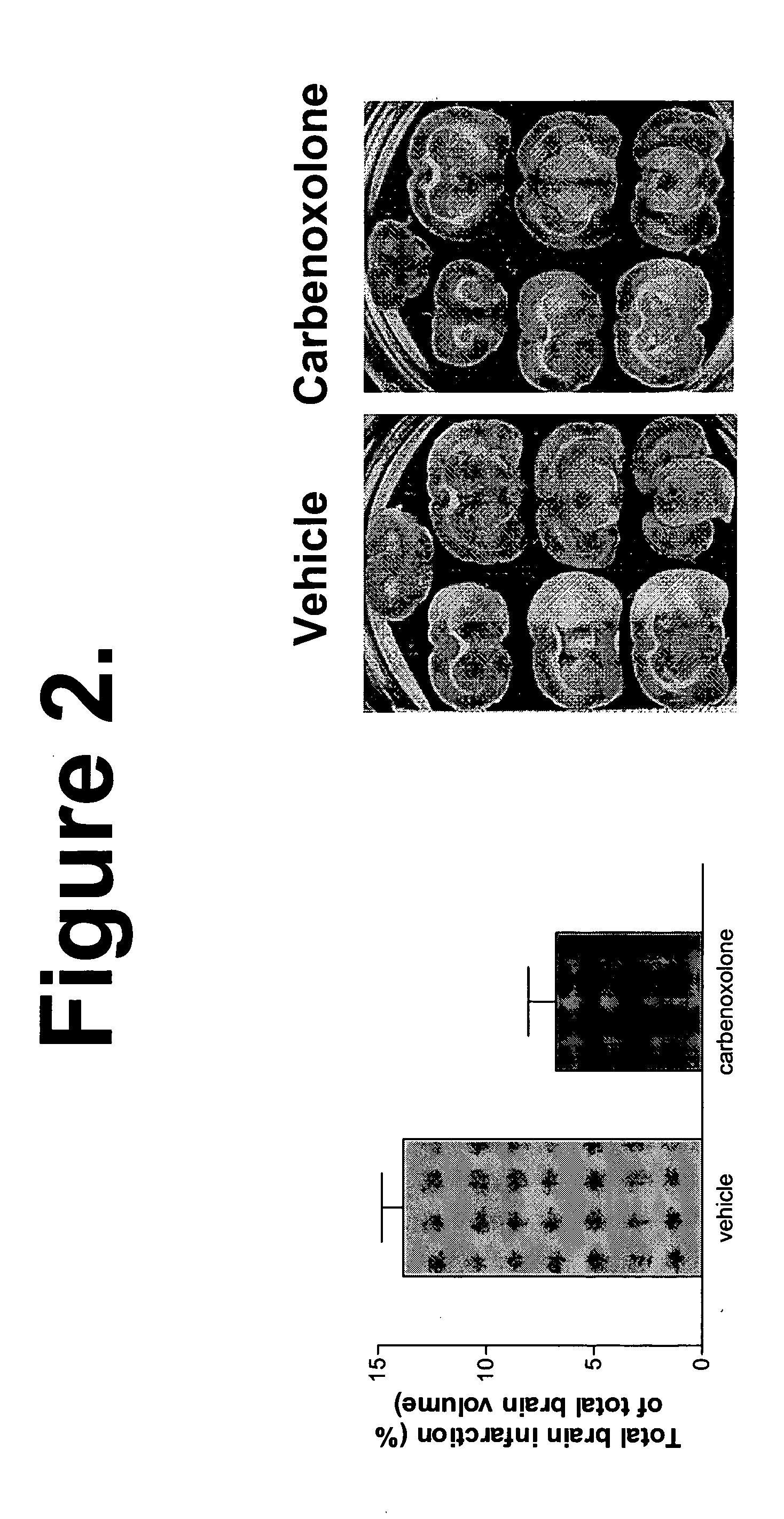Treatment of neurologic disorders with inhibitors of 11beta-HSD1
- Summary
- Abstract
- Description
- Claims
- Application Information
AI Technical Summary
Benefits of technology
Problems solved by technology
Method used
Image
Examples
example 1
[0108] The following compound, also referred to as BVT 2733 (Barf et al J Med Chem, 45, 3813-3815), is a potent and selective murine HSD1 inhibitor with in vitro IC50=96 nM for mouse HSD1, with negligible affinity for human 11βHSD1 (IC 50=3341 nM) and inactive for human 11βHSD2 (IC 50>10 000 nM).
[0109] 3-Chloro-2-methyl-N-{4-[2-(4-methyl-piperazin-1-yl)-2-oxo-ethyl]-thiazol-2-yl}-benzenesulfonamide
[0110] Alternatively, the following compound may also be used in testing:
[0111] 2-[2-(3-Chloro-2-methyl-benzenesulfonylamino)-thiazol-4-yl]-N,N-diethyl-acetamide
[0112] BVT 2733 was tested in the following MCAO protocol. A middle cerebral artery (MCA) occlusion was used to induce temporary cerebral ischemia. It involves anesthetizing the rat, making an incision in the ventral neck region to isolate the common carotid artery and the internal and external carotid arteries. The blood flow into the area is temporarily blocked by clamping off these arteries to allow the external carotid ar...
example 2
Animal Studies with Carbenoxolone
[0117] General method: The method used is a middle cerebral artery (MCA) occlusion to induce temporary cerebral ischemia. It involves anesthetizing the rat, making an incision in the ventral neck region to isolate the common carotid artery and the internal and external carotid arteries. The blood flow into the area is temporarily blocked by clamping off these arteries to allow the external carotid artery to be cut open. A silicone-coated mono filament is then inserted into the external carotid artery and woven through the artery into the internal carotid until it can occlude blood flow to the middle cerebral artery (MCA). The filament can then be tied in place (permanent occlusion) or removed after a short amount of time depending on the desired degree of ischemic damage (3 minutes to 2 hours). After removal of the filament, the external carotid stump is tied shut and the clamps removed to allow the return of blood flow to the brain. The incision wa...
PUM
| Property | Measurement | Unit |
|---|---|---|
| Time | aaaaa | aaaaa |
| Time | aaaaa | aaaaa |
| Time | aaaaa | aaaaa |
Abstract
Description
Claims
Application Information
 Login to View More
Login to View More - R&D
- Intellectual Property
- Life Sciences
- Materials
- Tech Scout
- Unparalleled Data Quality
- Higher Quality Content
- 60% Fewer Hallucinations
Browse by: Latest US Patents, China's latest patents, Technical Efficacy Thesaurus, Application Domain, Technology Topic, Popular Technical Reports.
© 2025 PatSnap. All rights reserved.Legal|Privacy policy|Modern Slavery Act Transparency Statement|Sitemap|About US| Contact US: help@patsnap.com



